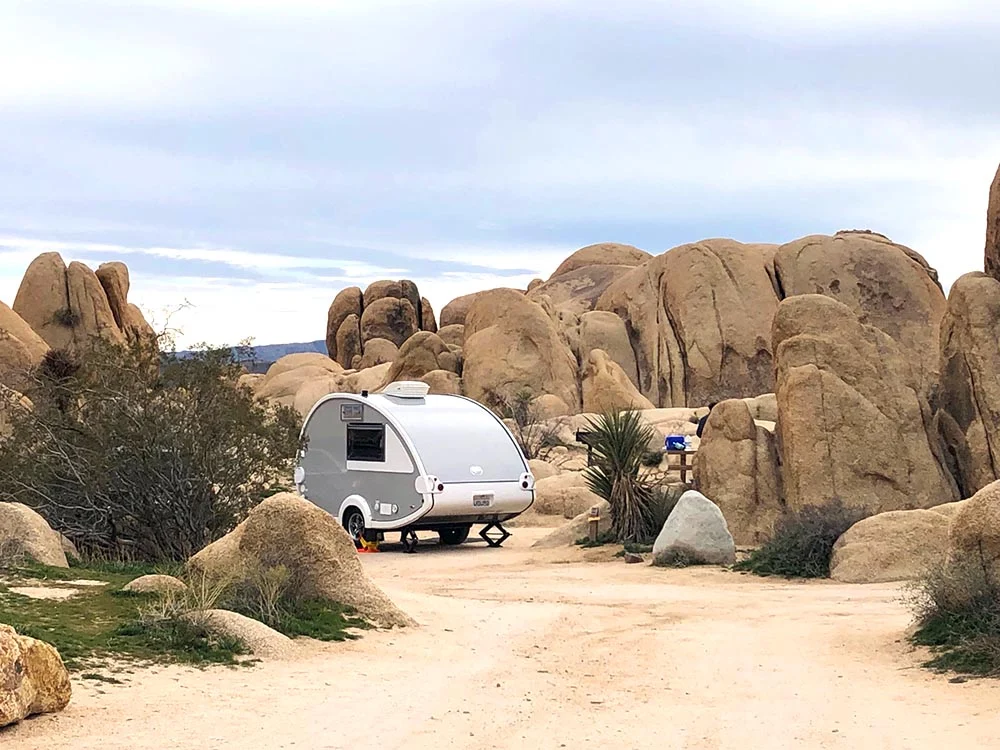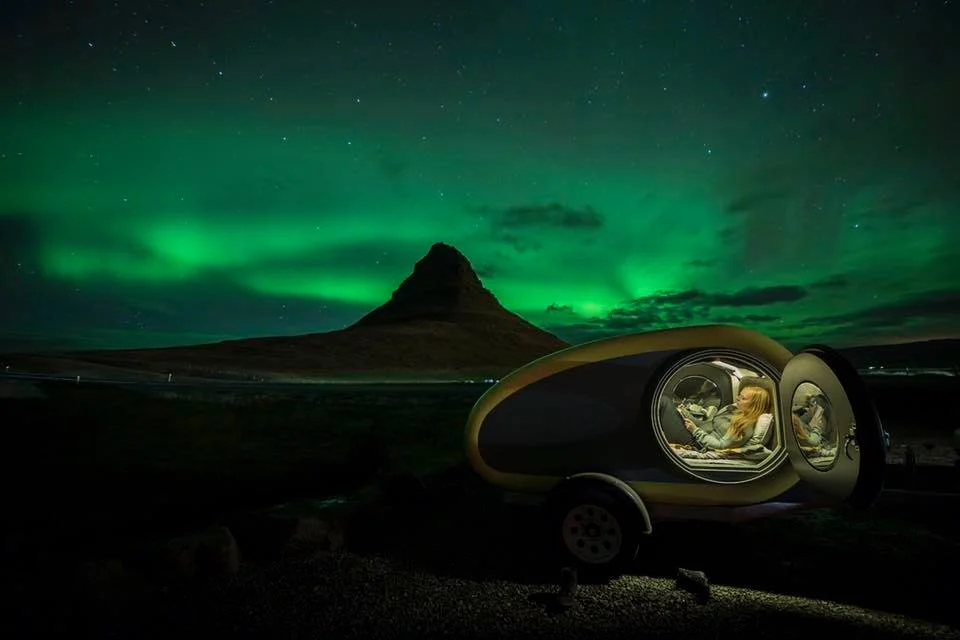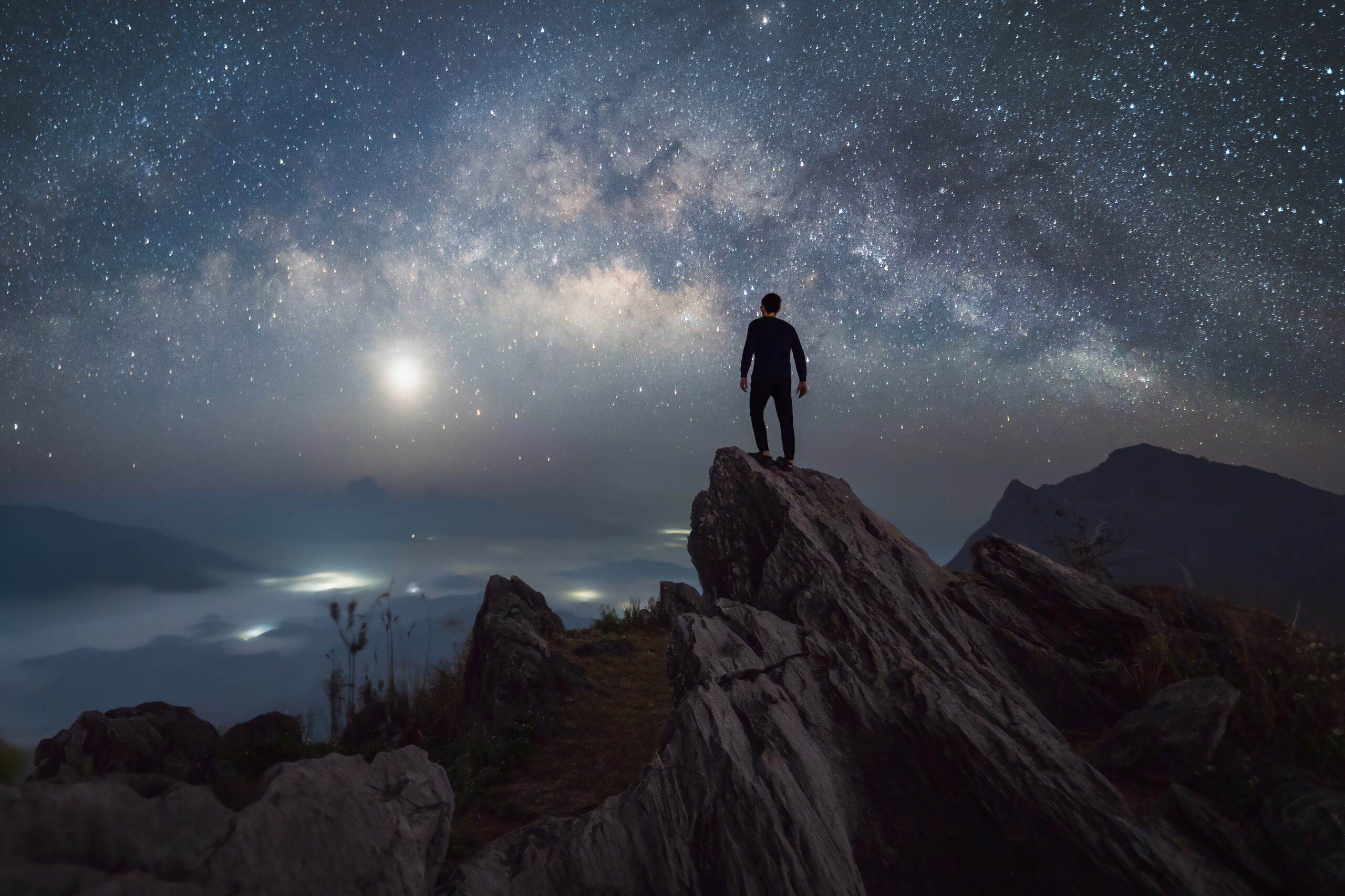Many campers love to get away from the light pollution of city or suburban life to take in the beauty of the night sky. If you don’t have the room for a telescope, you can still see plenty of celestial bodies with the aid of astronomy binoculars.
What Are Astronomy Binoculars?
Astronomy binoculars have large apertures (the openings of the lenses) for low light conditions and stargazing. They also come with integrated tripod adapters. Sometimes called ‘giant binoculars’, astronomy binoculars can magnify objects by up to ten times at large distances.
Giant binoculars tend to have apertures of greater than 70 mm (more on that below).
Many night sky viewers use binoculars made by Nikon, Celestron, Orion, or Barska. Prices can range from $50 up to over a few hundred dollars.
How to Choose a Good Pair of Giant Binoculars
When you see a product description for a pair of binoculars, you might noticed a couple of numbers separated by an ‘x’. For example, 7×35 or 10×50. The first of these numbers is the magnification of the lenses, sometimes called the ‘power’. The second number is the aperture, the diameter in millimeters of the front (objective) lens.
As an example, 7×35 binoculars have a 7 times power magnification, and a 35 mm diameter objective lens. For a set magnification, a larger aperture gives a brighter image in low light conditions, but also makes the binoculars heavier.
Also, a higher power set of binoculars makes the image more ‘shaky’, amplifying the amount of movement in the image. As the power increases, the field of view decreases.
For stargazing, light gathering ability is critically important. According to Telescope.com, you’ll want to choose binoculars with at least a 50 mm aperture for viewing celestial bodies. A 7×50 set of binoculars generally would work well, but some amateur astronomers prefer the 10×50 models.
Giant binoculars made explicitly for sky viewing generally have apertures of 70 mm to 100 mm. With these large aperture binoculars, you’ll usually want to use a tripod to ensure a steady viewing experience.
Sky and Telescope says that,
…on a clear, dark night out in the country, your eyes can see up to 3,000 stars, give or take. But when you use even modest 7×35 binoculars, that number rises to roughly 100,000 stars!
Definitely a reason to pick up some stargazing binoculars!
3 Highly Rated Stargazing Binoculars
For viewing the night sky at the campground, we chose three-highly rated models based on price, quality, aperture, and magnification.
1. Celestron SkyMaster 15×70 Bincoulars (<$100)
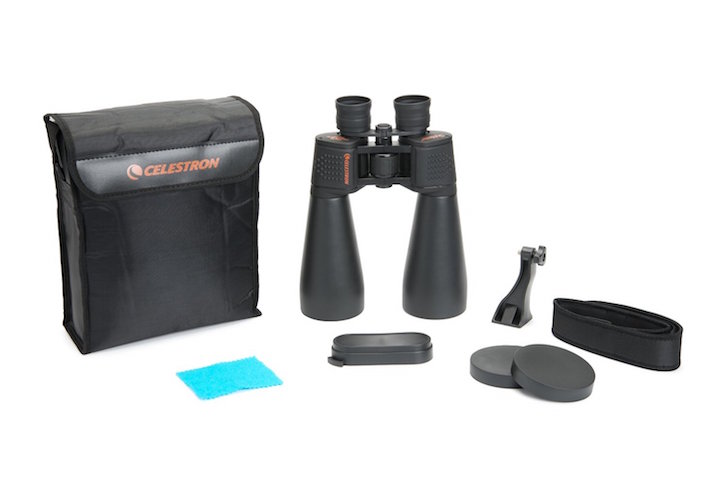
The SkyMaster 15×70 binoculars provide excellent value compared to some higher priced alternatives. This model comes with a tripod adapter, and may be the best first-time giant binocular model on the market. One reviewer, with 23 years of amateur astronomy experience, said that he preferred the view from these binoculars to his telescope!
Telescopes are expensive, they are big, heavy, hard to move, hard to store, complicated to set up correctly, and the view through the eyepiece can be crowded and dissapointing. For the casual observer binoculars are the superior choice.
Learn more or order here.
2. Nikon Aculon 7×50 Binoculars ($100-$200)
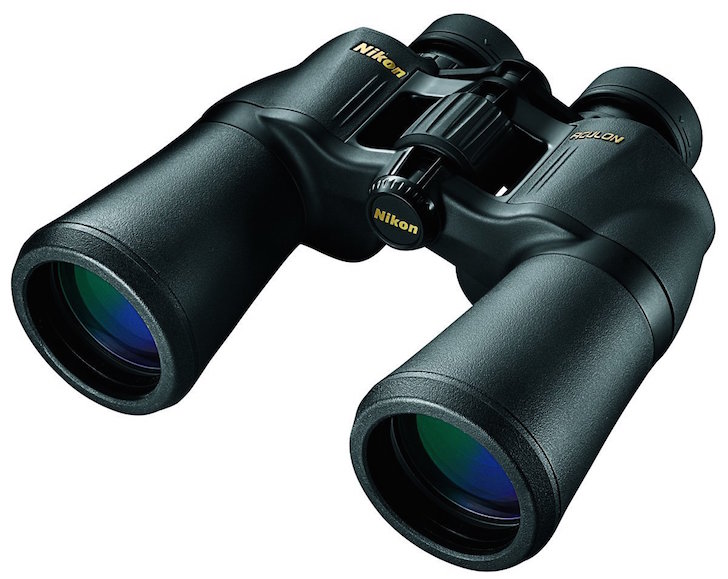
Designed to be as light as possible with maximum ergonomic comfort, these Nikon Aculon binoculars aren’t giant, but they’ve been found highly useful for nighttime stargazing. If you’re just looking for a high-class set of ‘regular’ size binoculars, you’ll have a hard time going wrong with these. Recommended by amateur astronomy class teachers, the Aculon 7×50’s cost about a fourth of professional grade astronomy binoculars, but provide much of the same performance.
I bought this since most telescope users recommended using binoculars for amateur astronomers. I’ve only used them at night in the clear sky. The moon looks amazing. There are so many more star clusters you can see with these things even with light pollution.
Learn more or order here.
3. Orion Mini Giant 15×63 Binoculars ($200+)
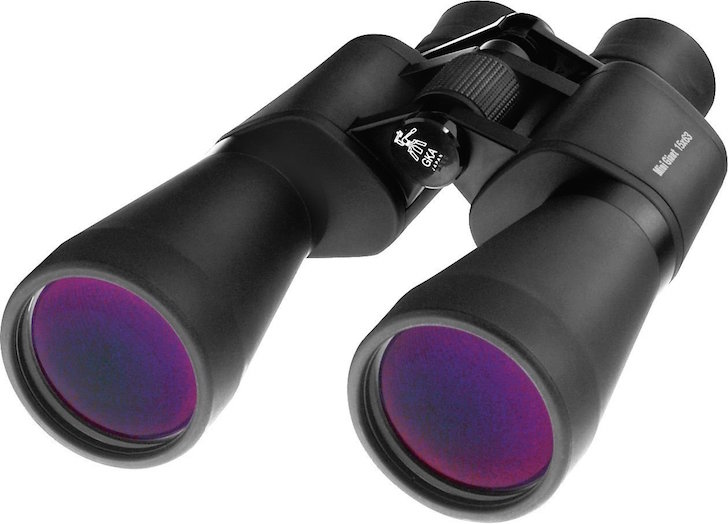
For the ultimate in light-gathering ability and night sky viewing, these Orion Mini Giant Binoculars are hard to beat. That doesn’t mean they’re the most cost-effective solution however. Comparable in size to the 15×70 Celestron, these Orion’s are priced about $150 more. What do you get for the added price? Mostly higher-quality components and lenses.
the quality of these binoculars is very good and the images are collimated correctly and very sharp.although the length is definitely an improvement over the giant style binoculars they’re still rather large and do require a tripod for steady viewing.my intention is to use these both for viewing wildlife in the daytime and the night sky. So far I’m very pleased.
Learn more or order here.

